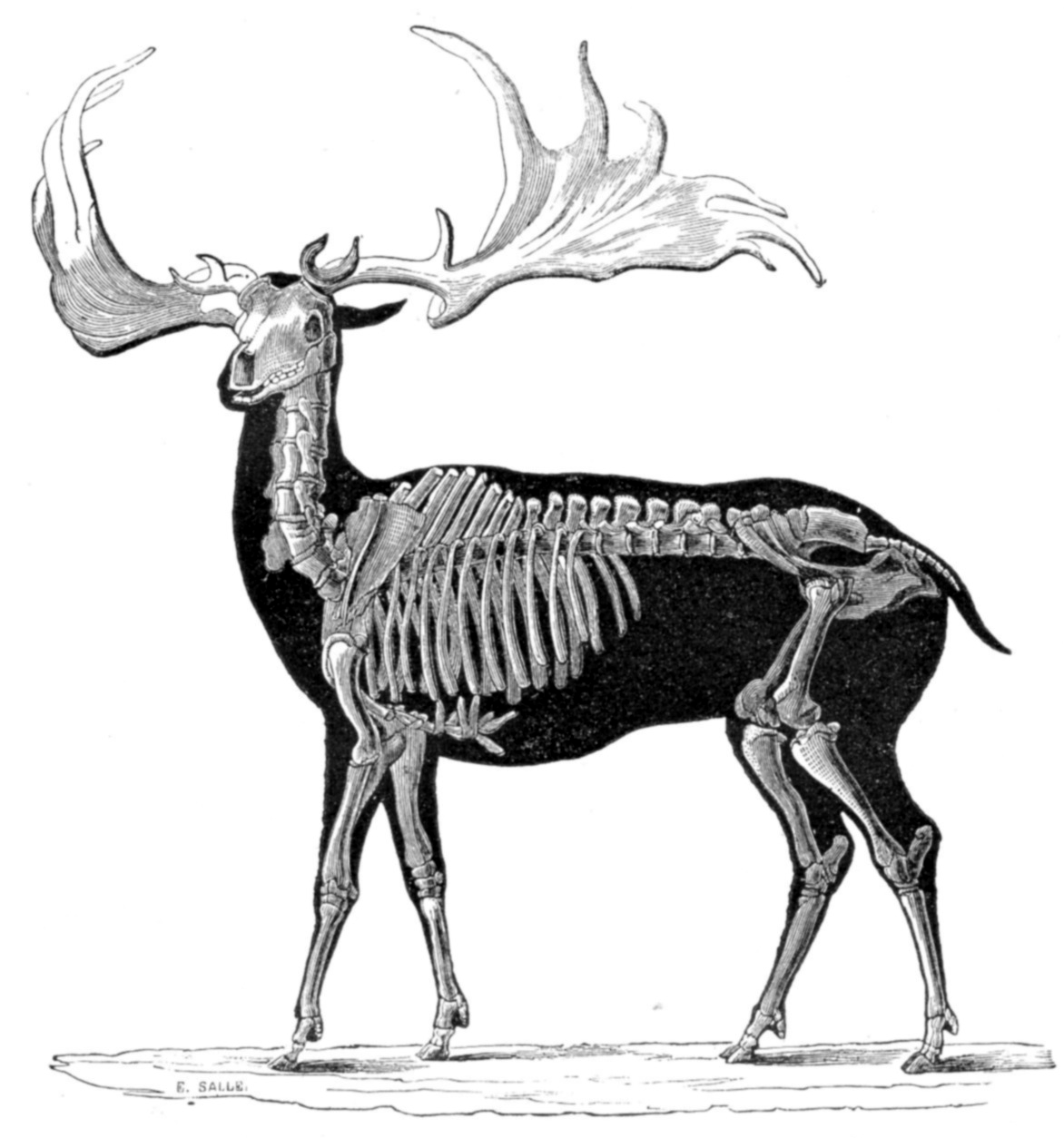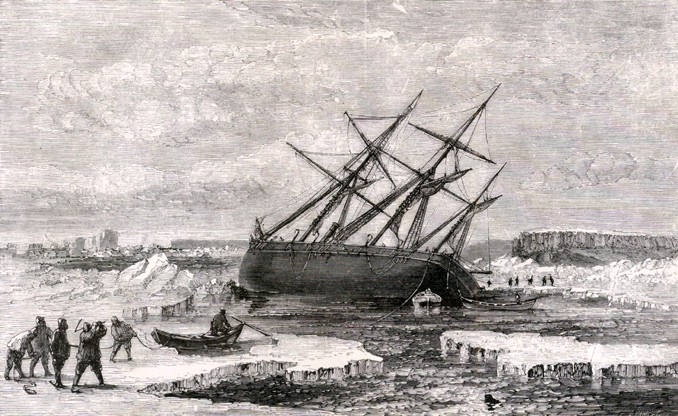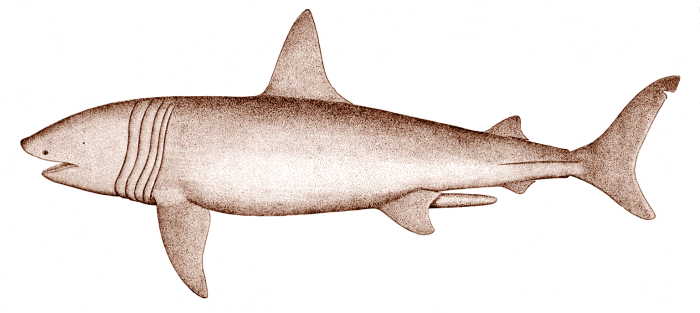|
National Museum Of Ireland – Natural History
The National Museum of Ireland – Natural History ( ga, Ard-Mhúsaem na hÉireann – Stair an Dúlra), sometimes called the Dead Zoo, a branch of the National Museum of Ireland, is housed on Merrion Street in Dublin, Ireland. The museum was built in 1856 for parts of the collection of the Royal Dublin Society and the building and collection were later passed to the State. The Natural History Collection comprised sub-collections for zoology, geology and botany; the geological collections have largely been held in storage from the 1960s, and the botanical collection was moved to National Botanic Gardens in 1970. However, the museum's zoological collection, and its building, have changed little since Victorian times, and it is sometimes described as a "museum of a museum" or a "stately home of death". Admission has been free of charge for decades, and attendance grew from 106,000 in 2007 to over 336,000 in 2017, and 388,000 in 2019, despite chronic staff shortages, and two o ... [...More Info...] [...Related Items...] OR: [Wikipedia] [Google] [Baidu] |
Merrion Street
Merrion Street (; ) is a major Georgian street on the southside of Dublin, Ireland, which runs along one side of Merrion Square. It is divided into Merrion Street Lower (north end), Merrion Square West and Merrion Street Upper (south end). It holds one entrance to the seat of the Irish Parliament, the Oireachtas, major government offices and two major cultural institutions. Name The street and square are named after Oliver FitzWilliam, 1st Earl of Tyrconnell who lived at Merrion Castle. The term “Merrion Street" is often used as shorthand for Irish Government in the same way as ''Whitehall'' or ''Downing Street'' are used to refer to the British Government. The official Irish Government news service website is merrionstreet.ie. Features The garden entrance of Leinster House, formerly Kildare House, seat of a major aristocratic house, is located on the street as is Irish Government Buildings, formerly the Royal College of Science for Ireland, and the main location of the De ... [...More Info...] [...Related Items...] OR: [Wikipedia] [Google] [Baidu] |
Giant Irish Deer
The Irish elk (''Megaloceros giganteus''), also called the giant deer or Irish deer, is an extinct species of deer in the genus ''Megaloceros'' and is one of the largest deer that ever lived. Its range extended across Eurasia during the Pleistocene, from Ireland to Lake Baikal in Siberia. The most recent remains of the species have been carbon dated to about 7,700 years ago in western Russia.International Code of Zoological Nomenclature">International Code of Zoological Nomenclature">/nowiki>International Code of Zoological Nomenclature/nowiki> (article 12) to validate ''Megalocerus''." The original spelling of ''Megalocerus'' was never used after its original publication.In 1844 Richard Owen named another synonym of the Irish elk, including it within the newly named subgenus ''Megaceros'', ''Cervus'' (''Megaceros'') ''hibernicus''. This has been suggested to be derived from another junior synonym of the Irish elk described by J. Hart in 1825, ''Cervus megaceros''. Despite being ... [...More Info...] [...Related Items...] OR: [Wikipedia] [Google] [Baidu] |
Richard Barrington (naturalist)
Richard Manliffe Barrington (Fassaroe near Bray, 1849 – Dublin, 15 September 1915) was an Irish naturalist. Barrington was a farmer and land valuer. He was educated at Trinity College Dublin where he gained an M.A. He wrote reports on the flora of Lough Ree, Lough Erne, Ben Bulben, Tory Island and the Blaskets all published by the Royal Irish Academy but most of his scientific papers are on birds. His best known work is ''The migration of birds, as observed at Irish lighthouses and lightships including the original reports from 1888 to 1897, now published for the first time, and an analysis of these and of the previously put together with an appendix giving the measurements of about 1600 wings'' London : R.H. PorterOnly 350 copies of this 667 page work were printed. Barrington was one of the leaders of the Royal Irish Academy Rockall expedition of 1896 with Robert Lloyd Praeger and John A. Harvie Brown of Dunipace (1844–1916), a Scottish gentleman naturalist.John Wi ... [...More Info...] [...Related Items...] OR: [Wikipedia] [Google] [Baidu] |
Dublin Zoo
Dublin Zoo ( ga, Zú Bhaile Átha Cliath), in Phoenix Park, Dublin, is a zoo in Ireland, and one of Dublin's most popular attractions. Established and designed in 1830 by Decimus Burton, it opened the following year. Today it focuses on conservation projects, breeding programmes, and growing awareness for animals. Its stated mission is to "work in partnership with zoos worldwide to make a significant contribution to the conservation of the endangered species on Earth". Covering over of Phoenix Park, it is divided into habitats including the Himalayan Hills, Wolves in the Woods, the African Savanna, Kaziranga Forest Trail, South American House, Zoorassic World, Gorilla Rainforest, Orangutan Forest, Sea Lion Cove, and Family Farm (as of July 2022). Overall the zoo houses about 400 animals across 100 species and attracts over one million visitors each year. History 19th century The Royal Zoological Society of Dublin was established at a meeting held at the Rotunda Hospital on ... [...More Info...] [...Related Items...] OR: [Wikipedia] [Google] [Baidu] |
Francis McClintock
Sir Francis Leopold McClintock (8 July 1819 – 17 November 1907) was an Irish explorer in the British Royal Navy, known for his discoveries in the Canadian Arctic Archipelago. He confirmed explorer John Rae's controversial report gathered from Inuit sources on the fate of Franklin's lost expedition, the ill-fated Royal Navy undertaking commanded by Sir John Franklin in 1845 attempting to be the first to traverse the Northwest Passage. McClintock's report was received more favorably than that of Rae, who was shunned and denied recognition for having discovered the lost expedition's fate. Rae's report ultimately guided McClintock to the correct area to conduct a search. McClintock also stirred controversy with his claim that Franklin, before his death, had essentially discovered the Northwest Passage, while in reality he had not. Rae, with his discovery of Rae Strait, had discovered the real ice-free passage through North America's Arctic archipelago. Early life McClint ... [...More Info...] [...Related Items...] OR: [Wikipedia] [Google] [Baidu] |
Polar Bear
The polar bear (''Ursus maritimus'') is a hypercarnivorous bear whose native range lies largely within the Arctic Circle, encompassing the Arctic Ocean, its surrounding seas and surrounding land masses. It is the largest extant bear species, as well as the largest extant land carnivore. A boar (adult male) weighs around , while a sow (adult female) is about half that size. Although it is the sister species of the brown bear, it has evolved to occupy a narrower ecological niche, with many body characteristics adapted for cold temperatures, for moving across snow, ice and open water, and for hunting seals, which make up most of its diet. Although most polar bears are born on land, they spend most of their time on the sea ice. Their scientific name means "maritime bear" and derives from this fact. Polar bears hunt their preferred food of seals from the edge of sea ice, often living off fat reserves when no sea ice is present. Because of their dependence on the sea ice, polar be ... [...More Info...] [...Related Items...] OR: [Wikipedia] [Google] [Baidu] |
Pygmy Hippopotamus
The pygmy hippopotamus or pygmy hippo (''Choeropsis liberiensis'') is a small hippopotamid which is native to the forests and swamps of West Africa, primarily in Liberia, with small populations in Sierra Leone, Guinea, and Ivory Coast. It has been extirpated from Nigeria. The pygmy hippo is reclusive and nocturnal. It is one of only two extant species in the family Hippopotamidae, the other being its much larger relative, the common hippopotamus (''Hippopotamus amphibius'') or Nile hippopotamus. The pygmy hippopotamus displays many terrestrial adaptations, but like the hippo, it is semiaquatic and relies on water to keep its skin moist and its body temperature cool. Behaviors such as mating and giving birth may occur in water or on land. The pygmy hippo is herbivorous, feeding on ferns, broad-leaved plants, grasses, and fruits it finds in the forests. A rare nocturnal forest creature, the pygmy hippopotamus is a difficult animal to study in the wild. Pygmy hippos were unknown ou ... [...More Info...] [...Related Items...] OR: [Wikipedia] [Google] [Baidu] |
Thylacine
The thylacine ( , or , also ) (''Thylacinus cynocephalus'') is an extinct carnivorous marsupial that was native to the Australian mainland and the islands of Tasmania and New Guinea. The last known live animal was captured in 1930 in Tasmania. It is commonly known as the Tasmanian tiger (because of its striped lower back) or the Tasmanian wolf (because of its canid-like characteristics). Various Aboriginal Tasmanian names have been recorded, such as ''coorinna'', ''kanunnah'', ''cab-berr-one-nen-er'', ''loarinna'', ''laoonana'', ''can-nen-ner'' and ''lagunta'', while ''kaparunina'' is used in Palawa kani. The thylacine was relatively shy and nocturnal, with the general appearance of a medium-to-large-size canid, except for its stiff tail and abdominal pouch similar to that of a kangaroo. Because of convergent evolution, it displayed an anatomy and adaptations similar to the tiger (''Panthera tigris'') and wolf (''Canis lupus'') of the Northern Hemisphere, such as dark trans ... [...More Info...] [...Related Items...] OR: [Wikipedia] [Google] [Baidu] |
Endangered Species
An endangered species is a species that is very likely to become extinct in the near future, either worldwide or in a particular political jurisdiction. Endangered species may be at risk due to factors such as habitat loss, poaching and invasive species. The International Union for Conservation of Nature (IUCN) Red List lists the global conservation status of many species, and various other agencies assess the status of species within particular areas. Many nations have laws that protect conservation-reliant species which, for example, forbid hunting, restrict land development, or create protected areas. Some endangered species are the target of extensive conservation efforts such as captive breeding and habitat restoration. Human activity is a significant cause in causing some species to become endangered. Conservation status The conservation status of a species indicates the likelihood that it will become extinct. Multiple factors are considered when assessing the ... [...More Info...] [...Related Items...] OR: [Wikipedia] [Google] [Baidu] |
Extinct
Extinction is the termination of a kind of organism or of a group of kinds (taxon), usually a species. The moment of extinction is generally considered to be the death of the last individual of the species, although the capacity to breed and recover may have been lost before this point. Because a species' potential range may be very large, determining this moment is difficult, and is usually done retrospectively. This difficulty leads to phenomena such as Lazarus taxa, where a species presumed extinct abruptly "reappears" (typically in the fossil record) after a period of apparent absence. More than 99% of all species that ever lived on Earth, amounting to over five billion species, are estimated to have died out. It is estimated that there are currently around 8.7 million species of eukaryote globally, and possibly many times more if microorganisms, like bacteria, are included. Notable extinct animal species include non-avian dinosaurs, saber-toothed cats, dodos, m ... [...More Info...] [...Related Items...] OR: [Wikipedia] [Google] [Baidu] |
Basking Shark
The basking shark (''Cetorhinus maximus'') is the second-largest living shark and fish, after the whale shark, and one of three plankton-eating shark species, along with the whale shark and megamouth shark. Adults typically reach in length. It is usually greyish-brown, with mottled skin, with the inside of the mouth being white in color. The caudal fin has a strong lateral keel and a crescent shape. Other common names include bone shark, elephant shark, sail-fish, and sun-fish. In Orkney, it is commonly known as hoe-mother (sometimes contracted to homer), meaning "the mother of the pickled dog-fish". The basking shark is a cosmopolitan migratory species, found in all the world's temperate oceans. A slow-moving filter feeder, its common name derives from its habit of feeding at the surface, appearing to be basking in the warmer water there. It has anatomical adaptations for filter-feeding, such as a greatly enlarged mouth and highly developed gill rakers. Its snout is conic ... [...More Info...] [...Related Items...] OR: [Wikipedia] [Google] [Baidu] |
Red Fox
The red fox (''Vulpes vulpes'') is the largest of the true foxes and one of the most widely distributed members of the Order (biology), order Carnivora, being present across the entire Northern Hemisphere including most of North America, Europe and Asia, plus parts of North Africa. It is listed as least concern by the IUCN. Its range has increased alongside human expansion, having been Foxes in Australia, introduced to Australia, where it is considered harmful to native mammals and bird populations. Due to its presence in Australia, it is included on the list of the List of the world's 100 worst invasive species, "world's 100 worst invasive species". The red fox originated from smaller-sized ancestors from Eurasia during the Middle Villafranchian period, and colonised North America shortly after the Wisconsin glaciation. Among the true foxes, the red fox represents a more progressive form in the direction of Carnivore, carnivory. Apart from its large size, the red fox is disting ... [...More Info...] [...Related Items...] OR: [Wikipedia] [Google] [Baidu] |






.jpg)


.jpg)

.jpg)